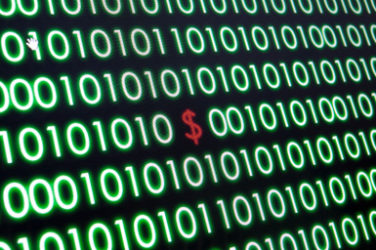
While regulators have been continuing their probe of high-frequency traders amid pressure from market observers, the participants themselves assert that the rapid-fire orders from these traders are not the source of market tumult.
“High-frequency trading is like the arch villain; it’s seems like it’s easy for most people to hate it,” said one broker-dealer executive. “It’s clear high-frequency trading is a pariah, and like it or not, it will be target of vitriol and regulation in the next 24 months. Did high-frequency trading cause the Lehman Brothers collapse or the sovereign debt crisis in Europe? No. Is this really what the regulators should look at?”
The Securities and Exchange Commission will be investigating the communications between exchanges and high-frequency trading firms. While most exchanges accept and welcome order flow from HFT firms, a few, in particular, thrive on it offering maker-taker pricing, which rewards liquidity providers. Regulators have also sent letters to a number of high-speed firms, such as Getco and Tradebot, requesting information about their trading activities and communications with exchanges, according to reports.
Some exchanges have recently announced initiatives designed to manage high-frequency traders, stopping short of charging fees.
Nasdaq announced plans to fine high-frequency traders who fill the markets’ data pipes with unnecessary quotes which are then later cancelled. Nasdaq’s scheme will penalize traders that send over one million messages per day but generate less than one trade per 100 messages, with the penalties ranging from 0.01 cents to one cent per trade, with charges increasing the further the messages are from the market price.
Direct Edge will implement a similar plan, called a message efficiency program, targeting customers whose trade-to-message ratio is less than 1-to-100. Those customers exceeding the ratio will receive lower rebates to place quotes in the market, down to 0.33 cents from 0.34 per share, according to the Financial Times.
“There is a very strong sentiment within the entire financial community, including Europe, whether buy side or sell side, and latency-oriented traders or not, that the tax will harm the markets,” said John Cogman, director of Autobahn Equities at Deutsche Bank. Cogman noted that the European Commission’s own study said that the tax would only have an impact of 1.8% GDP, and could potentially be revenue-negative or revenue-neutral. “That tax they will use to punish HFT firms won’t generate revenue because it’s so costly to implement and because it will negatively impact volumes. It’s an emotionally-driven rule.”
The London Stock Exchange’s Borsa Italiana will look to introduce a new set of fees intended to cull high-frequency trading. It will aim to limit HFT orders by charging traders if they send too many orders into its system. The new pricing system will be an update to a mechanism that was first introduced four years ago. This move is in response to the Italian market regulator’s request last year to curb HFT and stabilize the markets.
There has been a lot of discussion as to whether or not high-frequency trading was introducing any significant volatility or instability to the markets, with proponents on both sides of the fence. According to a survey conducted by Liquidnet, institutional investors are concerned about the effects that high-frequency trading has on the marketplace.
And a report released by the Tokyo Stock Exchange last year refutes claims of high-frequency trading having a detrimental effect on the marketplace, while the traditional buy side was conducting mass sell-offs during the volatility seen in August. The rapid-fire buy and sell orders from HFTs essentially had a net-neutral effect. The TSE classifies high-frequency trading as orders sent from its co-location facilities, which makes up about 30% of overall trading volume on its exchange.
HFT has been one of the scapegoats for the May 6, 2010 ‘flash crash’, in which the Dow Jones Industrial Average plummeted nearly 1,000 points during midday trading, before bouncing back almost immediately.






